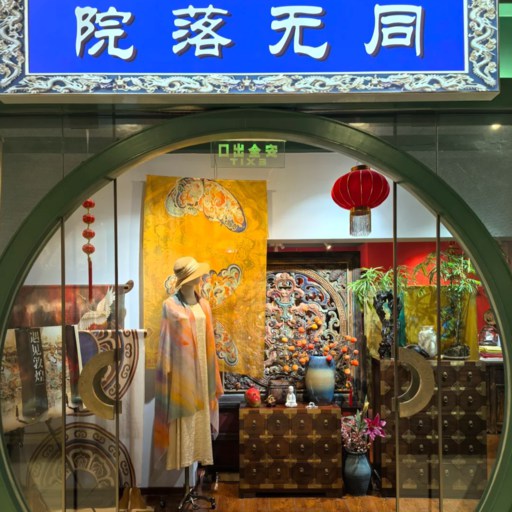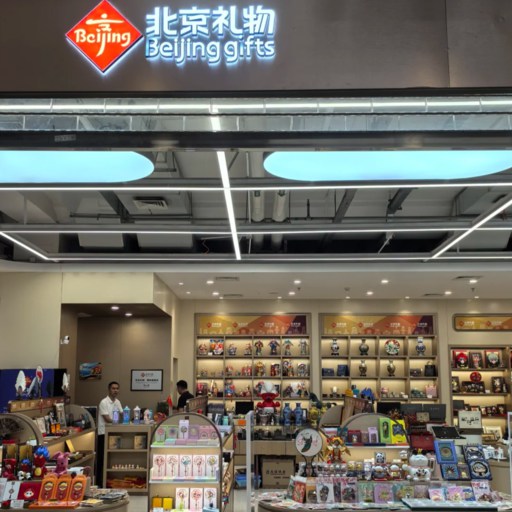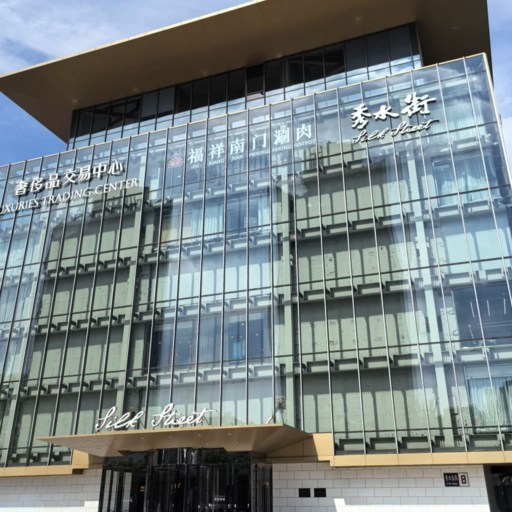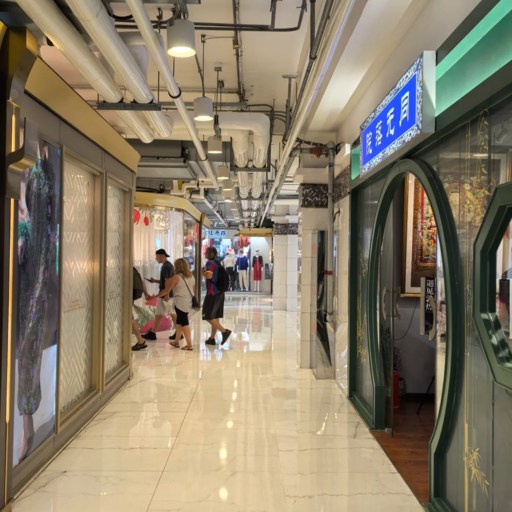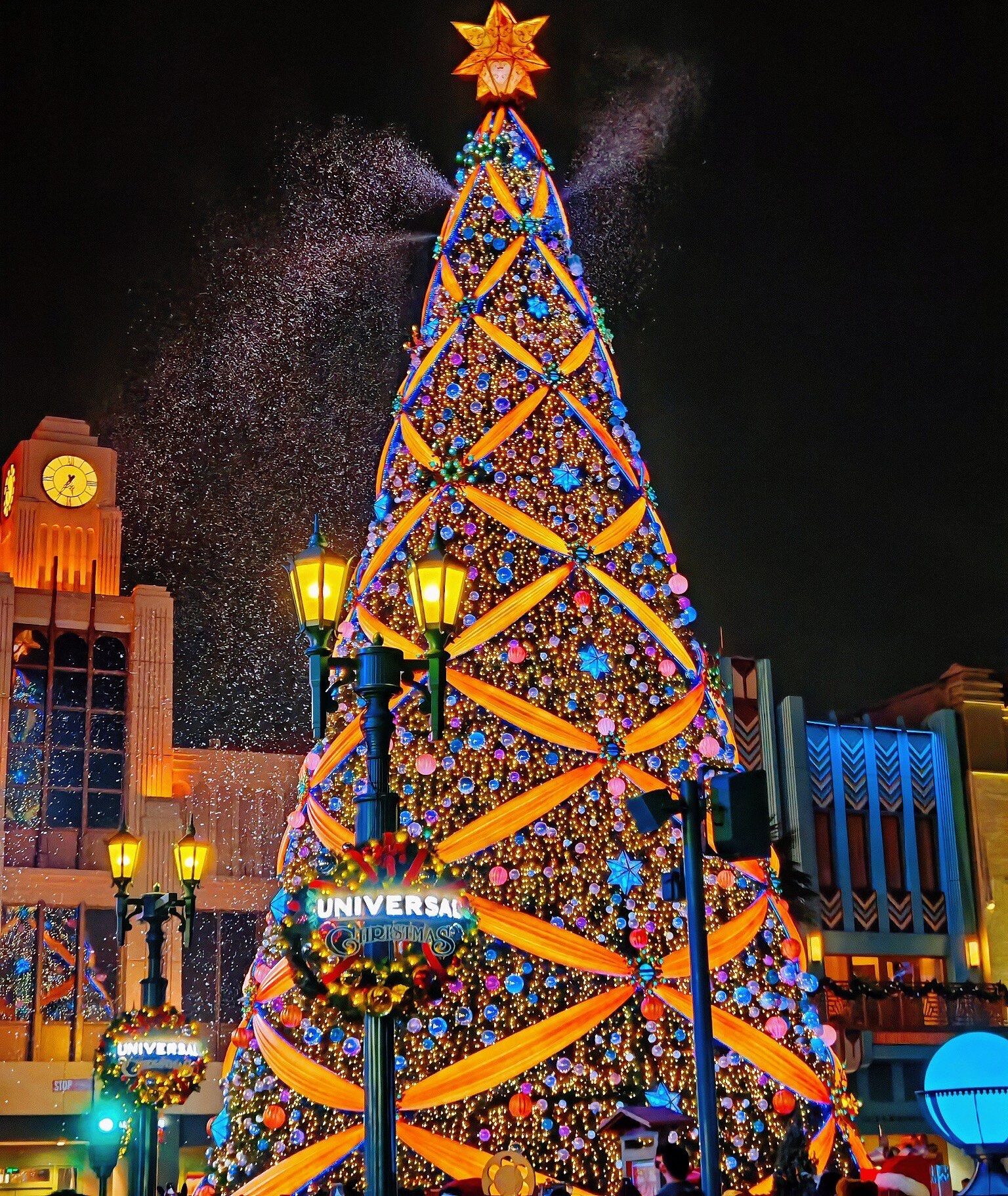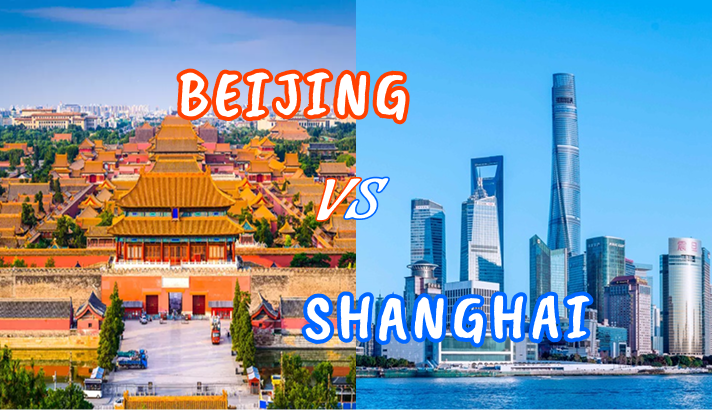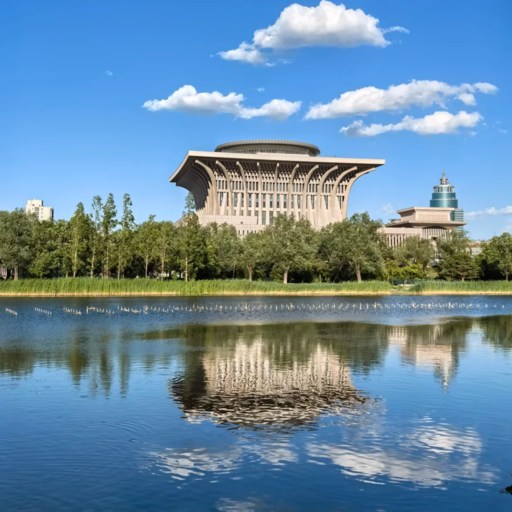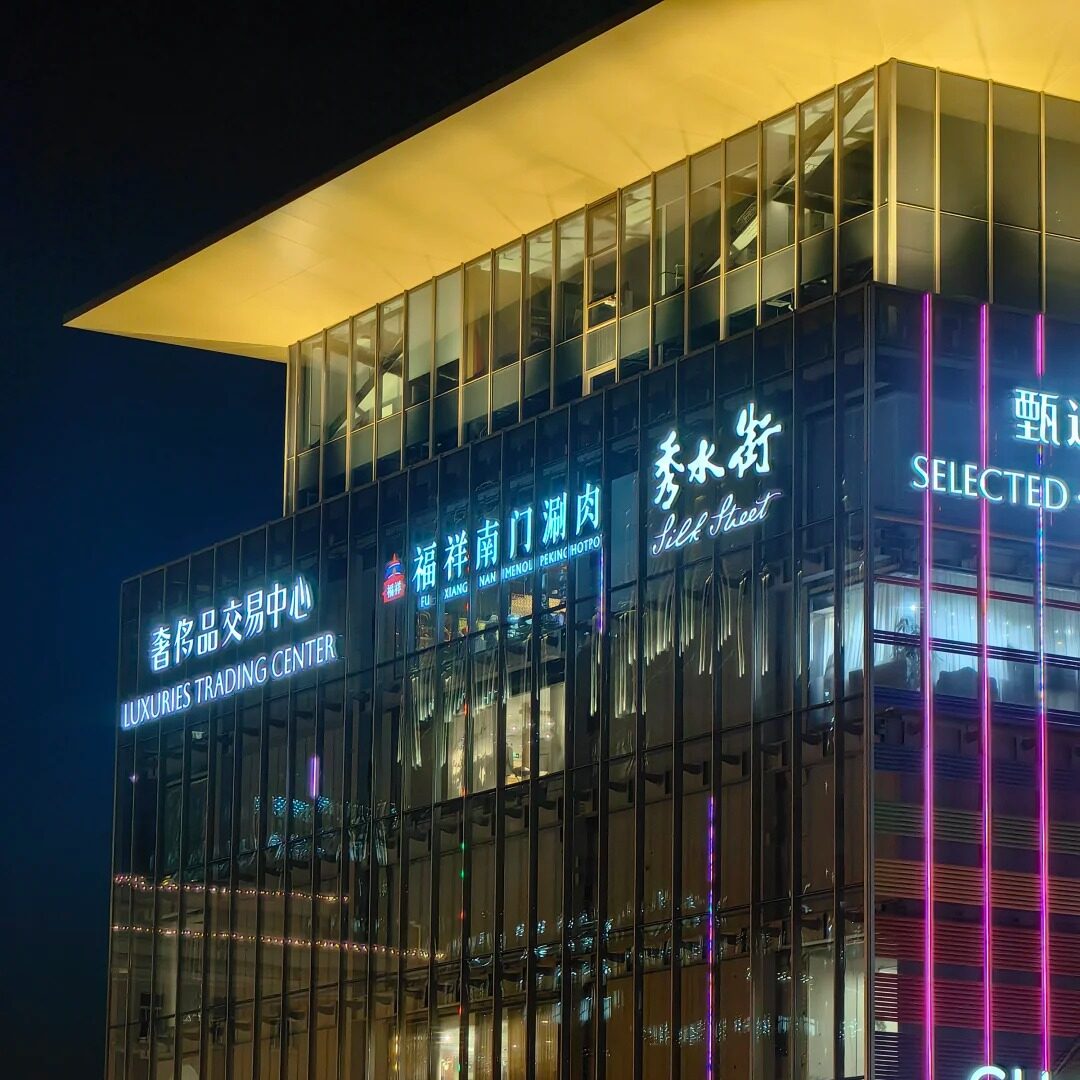
Night Scene of Silk Market
Located on the Charisse Chaoyang area at the corner of the East Xiushui Street, no. 8, is the Silk Market Beijing or the Silk Street and Xiushui Street, is just adjacent to the Yong’anli Station. It was once a row of outdoor stalls crowded but now it is a modern mall with more than 1,000 shops selling silk scarves, suits, jewelry and other souvenirs. It smells of fresh clothes and perfume and the air is filled with the echoing of bargaining.
Silk Market Beijing is a tiny playing field to most tourists where tradition meets hustle. You can have a custom-made qipao, and you can exercise your bargaining skills, or you can take away the gifts that are really local. It is loud and colorful, somewhat chaotic--but that is the very reason why people simply keep going back.
Inside Silk Market Beijing — What Makes It a Must-Stop in the City
Enter Silk Market Beijing, and you can instantly sense the beating of the heart of the place, voices bouncing off the floors, silk glimpsing the light, calculators whacking like percussion. It is not the ancient Xiushui Street of canvas-roofed and dusted stalls; it is now a new air-conditioned shopping center with more than a thousand sellers of hand-made suits to embroidered qipao and leather bags. This commotion remained, but refined. It is not only a putting-on and off shop to the visitors, but a peep into the blend of tradition and contemporary hustle in Beijing.
| Chinese Name | 秀水街 (Xiushui Street) |
| English Name | Silk Market Beijing / Silk Street Beijing |
| Location | No. 8 East Xiushui Street, Chaoyang District, Beijing |
| Nearest Subway | Yong’anli Station (Line 1, Exit A) |
| Opening Hours | Daily 9:30 AM – 9:00 PM |
| Shops & Vendors | Over 1,000 stalls and boutiques |
| Best For | Bargaining, silk clothes, souvenirs, custom tailoring |
| Payment Methods | Cash, Alipay Tour Pass, WeChat Pay |
| Nearby Spots | Ritan Park • China World Trade Center • Sanlitun |
What to Buy at Silk Market Beijing — Real Finds vs. Overhyped Souvenirs
- Clothes Store in Silk Market
- Souvenir in Silk Market
Authentic Silk and Tailor-Made Clothes
When you walk through Silk Market Beijing’s second floor, the air is somehow softer —silky, like some of the fabric scarves hanging over every wall. The shopkeepers flick them in the light so the colors ripple: jade green, pale rose, gold that seems to be warmer than it ought. It’s what made the market’s name. There are real, silk scarves for about 80-150 RMB, pajamas that feel cool even in July and bed sets that just look too shiny to be true.
And one tailor, in midsidewalk hailing, had even halted me on my way to ask, “You want qipao or suit?” Ten minutes later, I was looking into a mirror as she draped a measuring tape over my shoulders. She retrieved the catalogs, ran her finger over fabric samples and quoted us approximately 1200 RMB for a two-piece suit — in just three days due to pressing." It’s not some kind of luxurious atelier, per se, but it feels personal. If you’re not sure whether it’s the real deal, touch it: real silk will warm up right away between your fingers and make that little whispering sound locals call “si-si.” Fake ones? They shine too uniformly, as though they were made of plastic film.
Local-Style Accessories and Under-the-Radar Designer Finds
That’s where the fun happens inside Silk Market China — and where most tourists never make it past the first floor. “Don’t just consider the first floor — the prices fall, but quality rises,” warn TripAdvisor users. They’re right. Farther inside, you’ll find tiny boutiques piled with handmade leather bags, belts that don’t yell fake logos and ankle boots sewn by small Beijing craftsmen.
Still, caution helps. A few booths feature “Italian” brands that are gone when you Google them. Others are smart knockoffs of actual designer styles. It’s not all fakes, though — Silk and Pearl Market Beijing has its fill of emerging local labels mixing modern fits with intricate Chinese embroidery. There was one store I liked that had the minimal tote bags with a discreet dragon embossed near the edge of it, by no means flashy, just quietly sharp. It’s the kind of discovery that can cause you to momentarily lose sight of the hubbub at a bazaar.
Quirky Souvenirs and Modern Twists
Not everything here is fashion. You can see today’s souvenir shops squeezed in between the tailors, selling dull sword tea sets and roasted-leaf tea, silk-painted fans where you feel the grain of brush still. They are calligraphy bookmarks bound with red thread, small porcelain pandas and the occasional shop where the owner will paint your name in Chinese characters on rice paper. The smell of sandalwood wafts from incense burners nearby — it goes weirdly well with the new-shoe scent of the leather section downstairs.
Some of the corners are almost like galleries. I remember a stall full of neon opera masks next to silken lanterns the form of a lotus bloom. Kitschy? Maybe. But that’s the magic — Silk Market Beijing is a place where old-school Beijing craft smashes into tourist energy. What you buy in Silk Market Beijing depends on your taste: Choose the tactile, the handmade, the slightly imperfect. Those are the pieces you’ll actually remember when you’re unpacking months down the line. If you love the buzz of local markets after dark, you’ll enjoy discovering more vibrant shopping scenes in Beijing’s best night markets here.
The Art of Bargaining at Silk Market Beijing — How Low Can You Go?
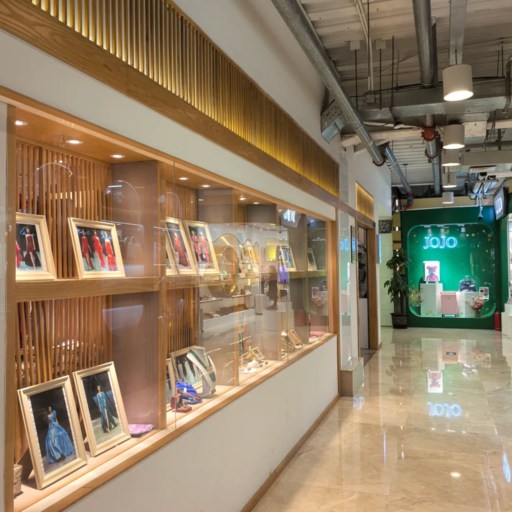
Exhibit in Silk Market
How to Start the Game
The game starts the moment you get off the escalator. You look at a jacket, and immediately three shopkeepers appear out of nowhere — one thrusting a calculator into your hand, the other grinning like you’ve just become best buddies. The price is a quick one: “1200 RMB.” You laugh, tap “600” back on the screen and the dance begins. That is the beat of Silk Market Beijing. Use a light touch,” he says; humor is far more effective than insistence. Some travelers on Reddit said in response, they start at one-third of a given offer and meet in the middle — it’s not rude, it’s what people are programmed to do.
If the seller is a stubborn hardball, just smile, say “maybe later” and take three steps. Best price for you, OK? behind your shoulder. That’s your cue. Don’t forget, Silk Street is not a war: It’s a conversation on neon light and the snap of calculator clicks.
Avoiding Common Traps
Every market has its downsides, and this one is no exception. The “special discount just for you” line? Common language for inflated starting prices. Some providers even promise to “swipe your card for better rate” — don’t. Use your own device or cash. There have been instances of duplicate charges or suspicious exchange rates. TripAdvisor users advise that a polite no is the best approach — “I’ll think about it” over an outright refusal.
Don’t rush into the first store you see; many sell the same items two floors down for half the price. And although it is mostly devoid of danger, there are a few counterfeit items lurking. If you encounter “Guuci” or “Channel,” pretend it’s all a part of the show, but nothing to be taken seriously. The fun is in knowing when to refuse and when to take a leap of faith.
Language and Payment Tips
Some Chinese can save you dollars and red-face. Try “tài guì le” (太贵了, “too expensive”) or “pián yi yì diǎn ma?” (便宜一点吗, “can it be cheaper?”). The locals appreciate it — even when your tones wander. If you’re curious about more polite gestures and cultural dos and don’ts while shopping in China, check out this quick guide to Chinese etiquette.
Many stalls take cash, but it’s so much easier to pay with Alipay Tour Pass or WeChat Pay. Both apps operate with foreign credit cards now, and some merchants even prefer them — change tends to run out late in the evening. The trick is to agree on the price before you show your payment screen. Silk Market Beijing is a social experience as much as a shopping one—part transaction, part theater. Leave with a smile, even if you get fleeced a bit; that’s how the story ends well.
Local Insight — Cultural Etiquette & Tourist Scams to Watch For
- Silk Market Beijing
- Corridor in Silk Market
Cultural Notes You Should Know
In order to understand Silk Market Beijing, you must first appreciate the art of bargaining — half commerce and half social performance. In China, “讲价” (jiǎng jià) isn’t considered rude; it’s something that you’re supposed to do. Sellers view it as part of the dance, a challenge of smarts rather than appetite. Be it the laughter, the mock outrage, or just clicks on a calculator—all are signs that you’re doing it right. A friend of mine once told me that in her hometown, getting a discount wasn’t about saving money but was instead an act to build “缘分,” she said, a moment of human connection.
I recall one shopkeeper who dubbed me “老朋友” (“old friend”) after five minutes of haggling over a silk robe. She chuckled, set the price at 200 RMB down from 380 and tossed in a little pouch “for luck.” It was not so much about the transaction as it was about winning a smile. That’s the secret sauce here — Silk Market Beijing wasn’t only transactional. It’s where language proficiency, charm and a little patience get you more than just silk.
Common Tourist Scams and How to Stay Safe
Yet behind the friendliness, Silk Market Beijing has its rough patches. There are stalls where big-brand labels come flashing by — “Gucci,” “Prada,” “LV” — but up close, you’ll notice misprinted hang tags, askew stitches or “Made in Chian” label flash. It’s among the reasons a cross section of travelers called it the “fake market in Beijing.” Think of those stands as entertainment, not opportunity.
Some shops draw you into a “VIP room” for “special quality” scarves that amusingly now cost 2000 RMB. Walk away if that happens. For silk, you can attempt the burn test — true silk has that smell of burnt hair and leaves an ash (synthetics will melt to hard beads). Failing that, go for a fabric rub: real silk heats up instantly and has a touch of texture to it, not smooth at all.
On the safety side, Silk Market Beijing is well lit and patrolled, though overzealous vendors may push into close quarters. Keep the Ziplocs closed, keep the smiles fixed and establish your limits soon. The best shoppers here are not the most hard-boiled; they’re those who can relish chaos without letting it bite.
FAQ about Silk Market Beijing
Q: What is the real name of Silk Market Beijing?
The proper name for the street is Xiushui Street (秀水街), but it is known colloquially as Silk Street Beijing. The old name is what you’ll still hear it called by local residents even though it’s since been transformed into a modern mall. When you search on the internet or look at maps, search for “秀水街购物中心.” Once your car is parked, it assists taxis and apps such as Didi in locating the appropriate drop-off.
Q: Is Silk Street worth visiting for locals or only tourists?
It’s mostly tourist-driven, but locals come in for quick tailoring or accessories. All sorts of Beijingers, even hunters of fabric or leather goods on weekends. The joy is the negotiation culture, and the mélange of souvenirs. That’s why most travel forums say to visit Silk Street Beijing at least once — purely for the energy.
Q: What is the average price for a silk scarf or tailor-made suit?
Prices vary wildly. A real silk scarf sets you back some 80-150 yuan, depending on pattern and weave. Tailor-made suits begin at about 800 RMB and can go to up to 1500 RMB for good stitching. Always haggle, 50 percent off the sticker is fair. The fashion center is also the best place what to buy in Silk Market Beijing – silk and tailor wear.
Q: Can I use Alipay or WeChat Pay without a Chinese bank card?
Yes. Both now accept payments from foreign credit cards via Tour Pass (Alipay) and WeChat Wallet. All you need is a passport and an active number. Several of the Silk Market Beijing stalls prefer QR payments to cash, so getting it established now saves you strife at checkout.
Q: Is Silk Market Beijing safe for solo travelers?
It is generally safe, even at night. The building is guarded and surveilled, and there is a metro exit immediately outside. The only “risk” is overpaying if you neglect to haggle. Many Reddit users say they feel safe to roam alone, describing it as a sort of “safe chaos” kind of locale.
Q: How to say “too expensive” or “cheaper please” in Chinese?
Now you can say “Tài guì le (太贵了)” for “too expensive,” or “Pián yi yì diǎn ma (便宜一点吗)” for cheaper please.” Even butchered tones make vendors smile, and it is respectful of the culture of Silk Street Beijing. Give it a shot — you’ll most likely do better.
Q: Are the items in Silk Market Beijing fake or authentic?
Both exist. Even real silk and local brands live beside obvious knock-offs. Always touch, test, and inspect. Real silk is warm, feels rougher; synthetics shine evenly. At best, consider a flashy logo as decoration, not designer goods. Silk Market Beijing: It’s still worth seeking out the quality (if you can see past the counterfeits).
Q: When is the best time to visit Silk Market Beijing?
Early morning jaunts from 9:30 to 11 are serene with patient shopkeepers. The afternoons are crowded, with tour buses pulling up throughout the day. The nights turn brighter and louder, more of a Silk Night Market vibe. The reviews on TripAdvisor lean toward early for peace, late for madness.
Q: What is near Silk Market Beijing for lunch or coffee breaks?
Ritan Park has small cafes right outside, while in the CBD, chain spots like Starbucks Reserve and a local brand, Seesaw Coffee, have shops. For lunch, two venues within a 10-minute walk open to non-Chinese are Donglaishun Hotpot or Haidilao.
Q: How to get refunds or exchanges after purchase?
Always ask for a receipt (“fāpiào”) and the shop’s contact before paying. Most retailers will let you exchange an item within 3 to 5 days, but getting a refund is harder. Save chat screenshots or WeChat Pay proof. Silk Market Beijing’s management desk on the first floor, is staffed by employees who can act as mediators if things get contentious.
